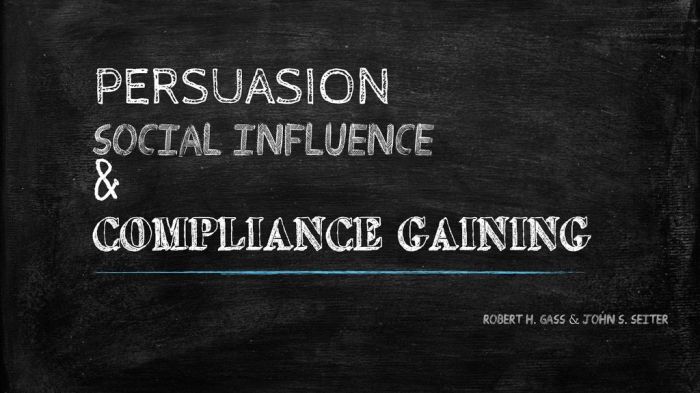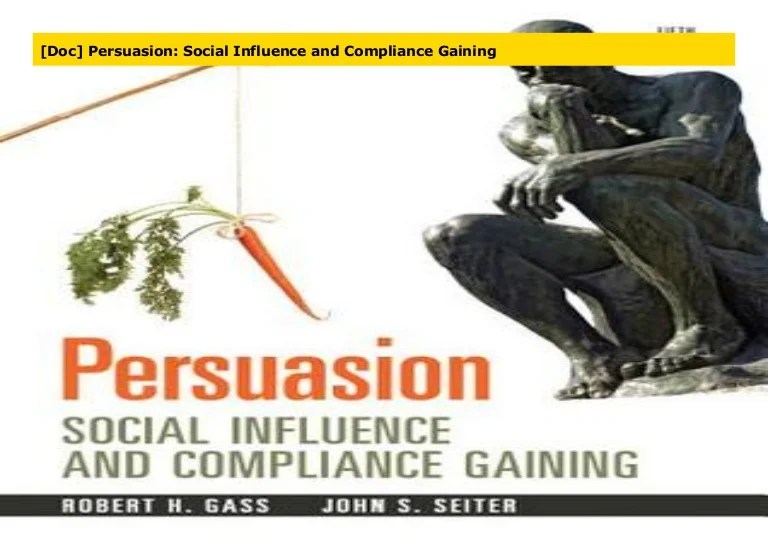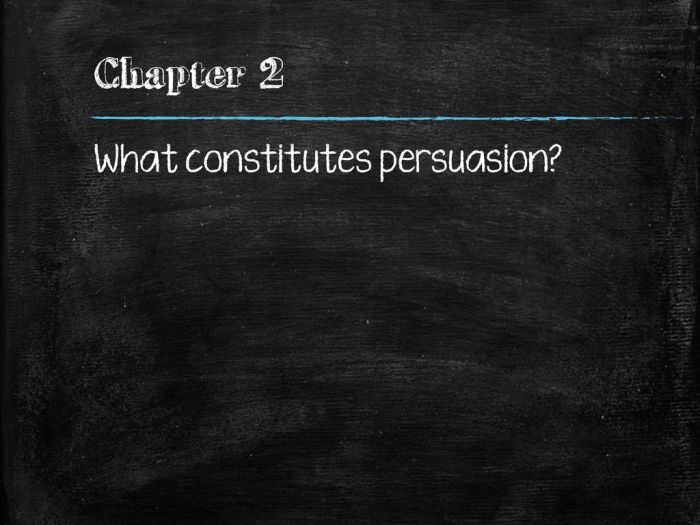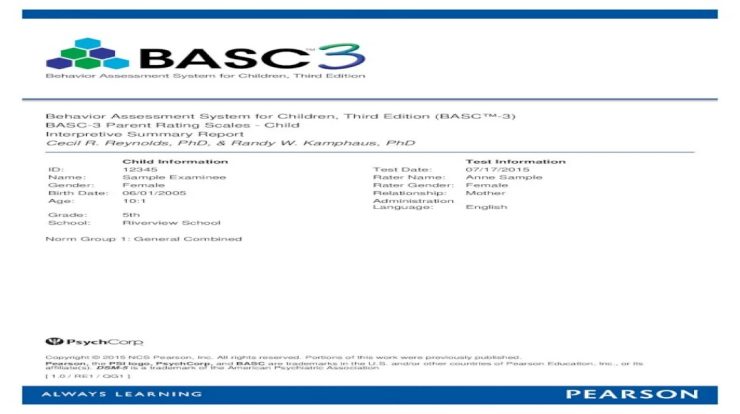Persuasion social influence and compliance gaining 7th edition pdf – Dive into the depths of “Persuasion, Social Influence, and Compliance Gaining, 7th Edition PDF,” a comprehensive guide that unveils the intricacies of persuasion and its profound impact on our interactions. This authoritative text empowers readers with a thorough understanding of the theories, techniques, and ethical considerations surrounding the art of influence, equipping them to navigate the complexities of human behavior.
Delve into the Elaboration Likelihood Model and Heuristic-Systematic Model, exploring the factors that shape persuasion effectiveness. Discover the nuances of source credibility, message framing, and audience receptivity. Master the art of compliance-gaining techniques, harnessing the power of reciprocity, commitment, and scarcity.
Navigate the challenges of resistance to persuasion, identifying strategies to overcome skepticism and foster receptiveness.
Introduction

Persuasion, social influence, and compliance gaining are essential concepts in various fields, including psychology, communication, and marketing. Persuasion involves changing someone’s attitudes or behaviors through communication. Social influence refers to the ways in which individuals’ thoughts, feelings, and behaviors are affected by others.
Compliance gaining is a specific form of social influence that focuses on getting someone to do something they may not initially want to do.
This book provides a comprehensive overview of these concepts, exploring the key theories, factors, and techniques involved in persuasion, social influence, and compliance gaining. It is an invaluable resource for anyone interested in understanding and applying these concepts in their personal and professional lives.
Key Theories of Persuasion: Persuasion Social Influence And Compliance Gaining 7th Edition Pdf

Elaboration Likelihood Model (ELM)
The Elaboration Likelihood Model (ELM) suggests that the effectiveness of a persuasive message depends on the level of cognitive effort the recipient puts into processing the message. If the recipient is highly motivated and has the ability to process the message, they will engage in central processing, carefully considering the arguments and evidence presented.
If the recipient is not motivated or lacks the ability to process the message, they will engage in peripheral processing, focusing on superficial cues such as the source’s attractiveness or the message’s emotional appeal.
Heuristic-Systematic Model (HSM)
The Heuristic-Systematic Model (HSM) proposes that individuals use two main routes to process persuasive messages: the heuristic route and the systematic route. The heuristic route involves using mental shortcuts or heuristics to make judgments. The systematic route involves carefully considering the arguments and evidence presented in the message.
The HSM suggests that individuals are more likely to use the heuristic route when they are short on time or cognitive resources, and more likely to use the systematic route when they are highly motivated and have the ability to process the message.
Factors Influencing Persuasion

Source Factors
The source of a persuasive message can have a significant impact on its effectiveness. Factors such as the source’s credibility, attractiveness, and power can influence the recipient’s willingness to accept the message. Credible sources are seen as knowledgeable, trustworthy, and unbiased.
Attractive sources are seen as likeable, charming, and similar to the recipient. Powerful sources are seen as having the ability to reward or punish the recipient.
Message Factors, Persuasion social influence and compliance gaining 7th edition pdf
The content, structure, and delivery of a persuasive message can also affect its effectiveness. Effective messages are clear, concise, and well-organized. They use strong arguments and evidence to support their claims. They are also delivered in a way that is engaging and persuasive.
Audience Factors
The audience’s attitudes, beliefs, and values can also influence the effectiveness of a persuasive message. Individuals are more likely to be persuaded by messages that are consistent with their existing beliefs and values. They are also more likely to be persuaded by messages that address their needs and concerns.
Q&A
What is the Elaboration Likelihood Model?
The Elaboration Likelihood Model posits that individuals’ attitudes and behaviors are influenced by the amount of cognitive effort they invest in processing persuasive messages.
How can I overcome resistance to persuasion?
To overcome resistance to persuasion, consider using strategies such as providing compelling evidence, addressing counterarguments, and building rapport with the audience.
What are the ethical considerations in using persuasion techniques?
Ethical persuasion practices involve using influence for socially responsible purposes, respecting individual autonomy, and avoiding deceptive or manipulative tactics.
